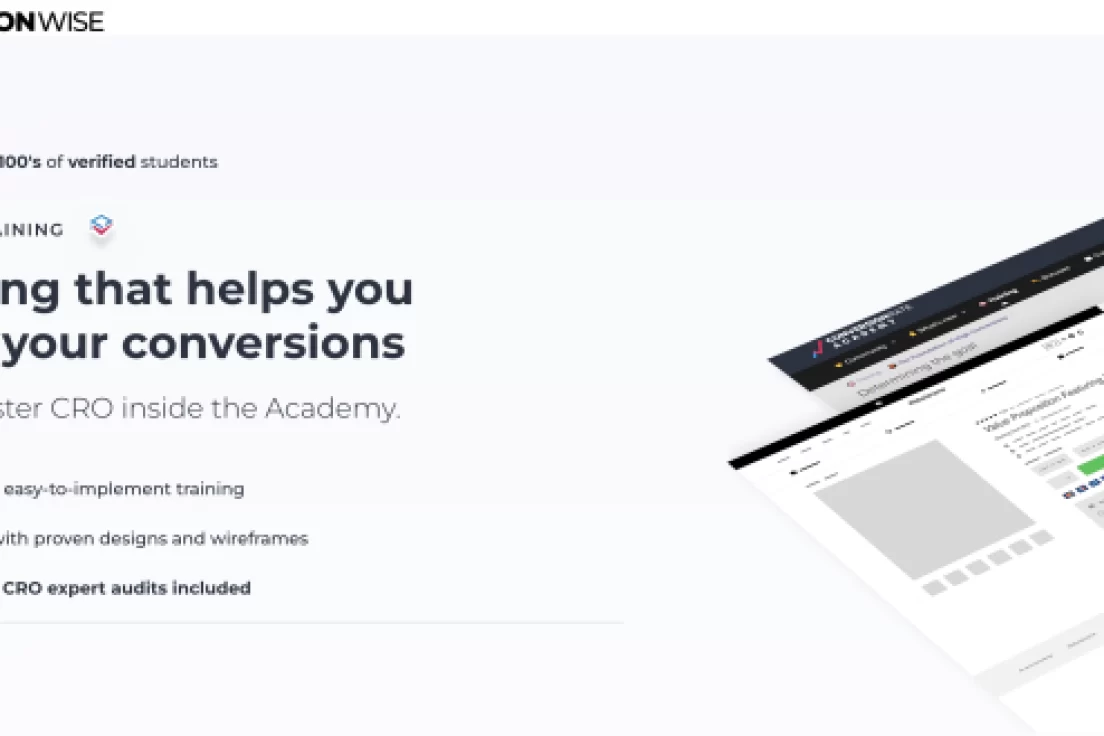Beast Analytics – Get to Know (& Use the Sh+t Out of) GA4
In the digital age, data is king. Understanding the behavior of your website visitors, tracking conversions, and analyzing user engagement are crucial aspects of optimizing your online presence. And when it comes to web analytics, Google Analytics has long been a powerful tool for businesses and marketers. Recently, Google introduced a new version called GA4 (Google Analytics 4) that offers enhanced features and capabilities. In this article, we will delve into the world of GA4, exploring its key functionalities and highlighting why you should embrace this powerful analytics platform.
What is GA4?
GA4, also known as Google Analytics 4, is the latest iteration of Google’s web analytics platform. It serves as an evolution of the previous Universal Analytics, bringing forth new features and a more comprehensive approach to data analysis. GA4 is designed to provide businesses and marketers with a deeper understanding of user behavior across multiple devices and platforms, including websites and mobile applications.
Embracing the Power of GA4
1. Enhanced Cross-Platform Tracking
One of the standout features of GA4 is its ability to track user interactions across various platforms seamlessly. Whether your audience engages with your website or mobile app, GA4 provides a holistic view of user behavior, allowing you to gain insights into their journey and optimize your marketing efforts accordingly. This cross-platform tracking enables a more comprehensive understanding of how users interact with your brand across different touchpoints.
2. Streamlined Event Tracking
GA4 introduces a streamlined approach to event tracking, making it easier than ever to monitor and measure specific actions performed by users. Events can be customized to track key interactions, such as button clicks, video plays, form submissions, and more. This granular event tracking empowers you to analyze user engagement at a micro-level and make data-driven decisions to optimize your website or app.
3. Smarter Machine Learning Insights
GA4 leverages the power of machine learning to provide smarter and more actionable insights. It automatically analyzes your data to uncover trends, identify opportunities, and highlight areas that require attention. With GA4, you can access valuable metrics such as engagement probability, churn probability, and even predictive metrics to anticipate user behavior and optimize your marketing strategies accordingly.
4. Deeper Integration with Google Ads
For businesses running Google Ads campaigns, GA4 offers enhanced integration and measurement capabilities. By linking your GA4 property with Google ads, you can gain a comprehensive understanding of how your ads drive user behavior on your website or app. This integration enables more effective optimization of your advertising campaigns, allowing you to allocate your budget wisely and achieve better ROI.
5. Future-Proof Analytics Solution
As the digital landscape continues to evolve, it is essential to adopt analytics solutions that are future-proof. GA4 is designed to adapt to changing user privacy preferences and evolving tracking technologies. With increased privacy regulations and the phasing out of third-party cookies, GA4 provides a foundation for continued data analysis and insights while respecting user privacy.
Getting Started with GA4
To start leveraging the power of GA4, follow these steps:
- Create a GA4 Property: Set up a new GA4 property in your Google Analytics account. This will allow you to collect data specifically for GA4 analysis.
- Install GA4 Tracking Code: Implement the GA4 tracking code on your website or mobile app. This code will enable data collection and event tracking.
- Define Goals and conversions: Determine the key goals and conversions you want to track in GA4. Set up relevant events and configure conversion tracking to measure the success of your marketing efforts.
- Explore Reports and Insights: Once data starts flowing into your GA4 property, explore the reports and insights available. Analyze user behavior, engagement, and conversion patterns to identify areas for improvement and optimization.
- Integrate with Google Ads: Link your GA4 property with your Google Ads account to gain a deeper understanding of how your ads impact user behavior and conversions.
- Continuously Optimize: Regularly review and analyze the data in GA4 to identify trends, make data-driven decisions, and optimize your marketing strategies for better results.
Unlock the Power of GA4
Google Analytics 4 brings a new level of sophistication and insights to web analytics. With its enhanced cross-platform tracking, streamlined event tracking, machine learning insights, deeper integration with Google Ads, and future-proof capabilities, GA4 is a game-changer for businesses and marketers. Embrace the power of GA4 and unlock the potential of your data to drive better business outcomes.
Frequently Asked Questions (FAQ)
What is the difference between Google Analytics and GA4?
Google Analytics and GA4 (Google Analytics 4) are two versions of Google’s web analytics platform. The main differences between the two are:
- Data Model: Google Analytics uses a session-based data model, while GA4 utilizes an event-based data model. This means that Google Analytics focuses on sessions, pageviews, and unique visitors, whereas GA4 emphasizes individual user interactions and events.
- Cross-Platform Tracking: GA4 provides enhanced cross-platform tracking, allowing businesses to track user interactions across websites and mobile applications seamlessly. Google Analytics primarily focuses on tracking interactions on websites.
- Machine Learning Insights: GA4 incorporates machine learning capabilities to provide smarter insights and predictive metrics, such as engagement probability and churn probability. Google Analytics does not offer these advanced machine learning features.
- Event Tracking: GA4 introduces streamlined event tracking, making it easier to monitor and measure specific user actions. While Google Analytics also supports event tracking, GA4 offers a more streamlined approach and greater flexibility.
- Integration with Google Ads: GA4 offers deeper integration and measurement capabilities with Google Ads. This enables businesses to gain a comprehensive understanding of how their ads impact user behavior on websites and apps. Google Analytics can also integrate with Google Ads, but GA4 provides more advanced measurement options.
How do I change Google Analytics 4 to Universal?
To switch from GA4 to Universal Analytics, follow these steps:
- Set up a new Universal Analytics property within your Google Analytics account.
- Obtain the Universal Analytics tracking code specific to your new property.
- Replace the GA4 tracking code on your website or app with the Universal Analytics tracking code.
- Configure goals and conversions in your Universal Analytics property to align with your objectives.
- Allow time for data collection in Universal Analytics and explore the available reports and insights.
Please note that transitioning from GA4 to Universal Analytics may involve potential data loss or discrepancies. It’s recommended to consult with a web analytics specialist or review Google’s documentation for a more detailed transition process.
What is the difference between GA4 and Universal Analytics?
GA4 and Universal Analytics differ in terms of data model, tracking capabilities, and integration options. The key differences include:
- Data Model: Universal Analytics uses a session-based data model, focusing on sessions, pageviews, and unique visitors. GA4 adopts an event-based data model, emphasizing individual user interactions, events, and user properties.
- Event Tracking: GA4 introduces streamlined event tracking, making it easier to track specific user actions. Universal Analytics also supports event tracking, but it may require additional customization.
- Cross-Platform Tracking: GA4 provides enhanced cross-platform tracking, allowing businesses to track user interactions across websites and mobile apps seamlessly. Universal Analytics primarily focuses on tracking interactions on websites.
- Machine Learning Insights: GA4 incorporates machine learning capabilities to provide advanced insights and predictive metrics. Universal Analytics does not offer these machine learning features.
- Integration with Google Ads: GA4 offers deeper integration with Google Ads, enabling businesses to understand how their ads impact user behavior. Universal Analytics also integrates with Google Ads but may not offer the same level of measurement capabilities.
How do I get Google Analytics 4 code?
To obtain the GA4 tracking code, follow these steps:
- Set up a GA4 property within your Google Analytics account or upgrade an existing Universal Analytics property to GA4.
- Access the Admin section of your Google Analytics account.
- Under the “Data” section, click on “Data Streams” in the Property column.
- Locate your website or app data stream and click on it to access the GA4 tracking code.
- Copy the GA4 tracking code provided and implement it on the relevant pages of your website or within your mobile app.
Ensure that you follow the implementation instructions carefully to ensure accurate data collection and tracking.
People Also Ask: Google Analytics and GA4
As the world of web analytics continues to evolve, it’s natural to have questions about the differences between Google Analytics and GA4 (Google Analytics 4), as well as how to transition between the two. In this section, we will address the common queries related to these topics.
What is the difference between Google Analytics and GA4?
Google Analytics and GA4 are two versions of Google’s web analytics platform. The key differences between the two are:
- Data Model: Google Analytics uses a session-based data model, where data is organized around sessions and pageviews. GA4, on the other hand, uses an event-based data model that focuses on individual user interactions, allowing for more granular tracking and analysis.
- Cross-Platform Tracking: GA4 provides enhanced cross-platform tracking, allowing businesses to track user interactions across websites and mobile applications seamlessly. Google Analytics, while capable of tracking websites, does not offer the same level of integration with mobile apps.
- Machine Learning Insights: GA4 incorporates machine learning capabilities to provide smarter insights and predictive metrics, such as engagement probability and churn probability. Google Analytics does not offer these advanced machine learning features.
- Event Tracking: GA4 introduces a streamlined approach to event tracking, making it easier to monitor and measure specific user actions. Google Analytics also supports event tracking but may require additional configuration and customization.
- Integration with Google Ads: GA4 offers deeper integration with Google Ads, enabling businesses to gain insights into how their ads influence user behavior on websites and apps. While Google Analytics can also integrate with Google Ads, GA4 provides more advanced measurement capabilities.
How do I change Google Analytics 4 to Universal?
If you have already implemented GA4 and want to switch back to Universal Analytics, it’s important to note that GA4 and Universal Analytics are separate implementations. To transition from GA4 to Universal Analytics, follow these steps:
- Set up a new Universal Analytics property: Create a new property within your Google Analytics account specifically for Universal Analytics.
- Obtain the Universal Analytics tracking code: Access the tracking code specific to your Universal Analytics property. You can find this code in the Admin section of your Universal Analytics account.
- Replace the GA4 tracking code: Remove the GA4 tracking code from your website or app and replace it with the Universal Analytics tracking code.
- Configure goals and conversions: Set up the desired goals and conversions within your Universal Analytics property. Ensure that the events and tracking configurations align with your objectives.
- Allow time for data collection: After implementing the Universal Analytics tracking code, allow sufficient time for data collection and analysis.
- Analyze data in Universal Analytics: Once data starts flowing into your Universal Analytics property, explore the reports and insights available to analyze user behavior, conversions, and other relevant metrics.
Please note that transitioning from GA4 to Universal Analytics may involve potential data loss or discrepancies. It’s recommended to consult with a web analytics specialist or review Google’s documentation for a more detailed and accurate transition process.
What is the difference between GA4 and Universal Analytics?
GA4 and Universal Analytics differ in their data models, tracking capabilities, and integration options. Here are the key differences between the two:
- Data Model: Universal Analytics uses a session-based data model, focusing on sessions, pageviews, and unique visitors. GA4 adopts an event-based data model, emphasizing individual user interactions, events, and user properties.
- Event Tracking: GA4 introduces streamlined event tracking, making it easier to track specific user actions. Universal Analytics also supports event tracking but may require additional customization.
- Cross-Platform Tracking: GA4 provides enhanced cross-platform tracking, allowing businesses to track user interactions across websites and mobile apps seamlessly. Universal Analytics primarily focuses on tracking website interactions.
- Machine Learning Insights: GA4 incorporates machine learning capabilities to provide advanced insights and predictive metrics. Universal Analytics does not offer these machine learning features.
- Integration with Google Ads: GA4 offers deeper integration with Google Ads, enabling businesses to understand how their ads impact user behavior. Universal Analytics also integrates with Google Ads but may not offer the same level of measurement capabilities.
How do I get Google Analytics 4 code?
To obtain the GA4 tracking code, follow these steps:
- Set up a GA4 property: Create a new GA4 property within your Google Analytics account or upgrade an existing Universal Analytics property to GA4.
- Access the tracking code: Once the GA4 property is set up, go to the Admin section of your Google Analytics account.
- Find the GA4 tracking code: In the Property column, click on “Data Streams” under the “Data” section. Locate your website or app data stream and click on it to access the GA4 tracking code.
- Implement the tracking code: Copy the GA4 tracking code provided and implement it on the relevant pages of your website or within your mobile app.
Remember to follow the implementation instructions carefully to ensure accurate data collection and tracking.
Sales Page: Download Files Size: 2.16 GB
Also, See: Rachel Pedersen – Youtube Academy
DOWNLOAD
(click on the link Here, create your own account and copy the content to your own cloud to watch/download the content anytime later) or Simply Download From our torrent server
This content is locked For
Member Only
Sign Up to see all our download links and hidden content.
-
-
100% Satisfaction Guaranteed
-
Download as much as you need
-
You can choose from two membership options:
-
Monthly or LifeTime
-
Starts at $30
-




